Dinosaurs: Their Lives, Their Deaths and Their Evolution!
by Dr. Bob Gardner
Department of Mathematics
Department of Physics and Astronomy
Institute of Mathematical and Physical Sciences
East Tennessee State University
The History of Paleontology
Before the science of geology was developed, people thought most geologic
features were either left over from the "creation" or a result of the
"great flood." In the 1800's, Charles Lyell
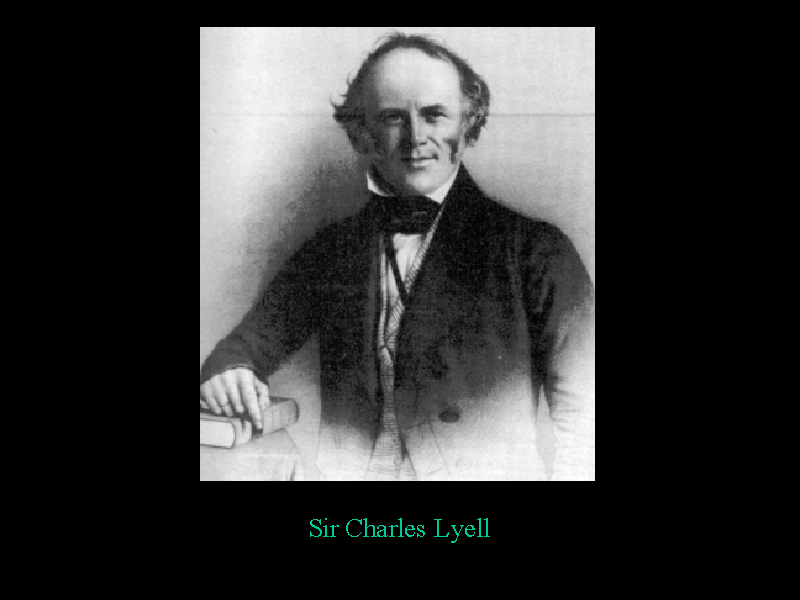 published his book Principles of Geology in which he collected much
of the geological information known at the time and set down the foundations
of modern geology.
published his book Principles of Geology in which he collected much
of the geological information known at the time and set down the foundations
of modern geology.
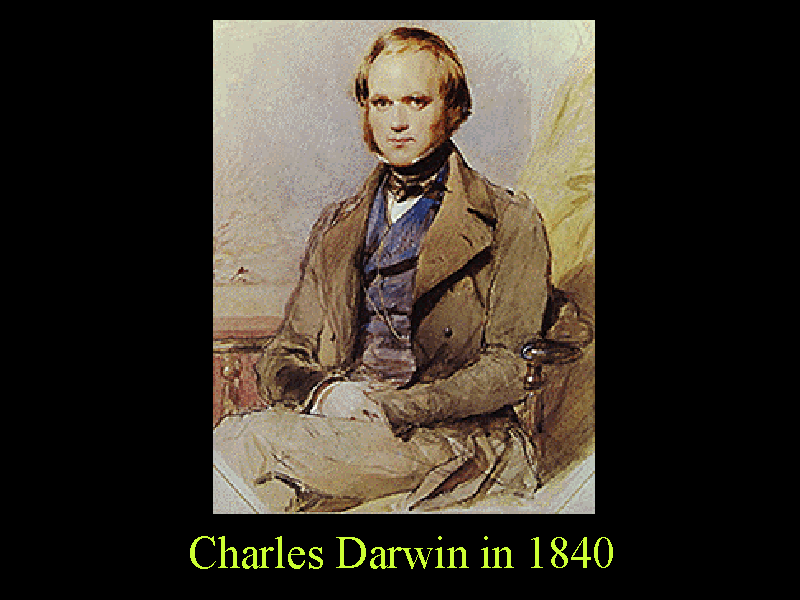 Charles Darwin
read Lyell's book and saw that the gradual processes of geology implied that
the Earth was extremely old. After Darwin's five year voyage around the world
on the H.M.S. Beagle,
Charles Darwin
read Lyell's book and saw that the gradual processes of geology implied that
the Earth was extremely old. After Darwin's five year voyage around the world
on the H.M.S. Beagle,
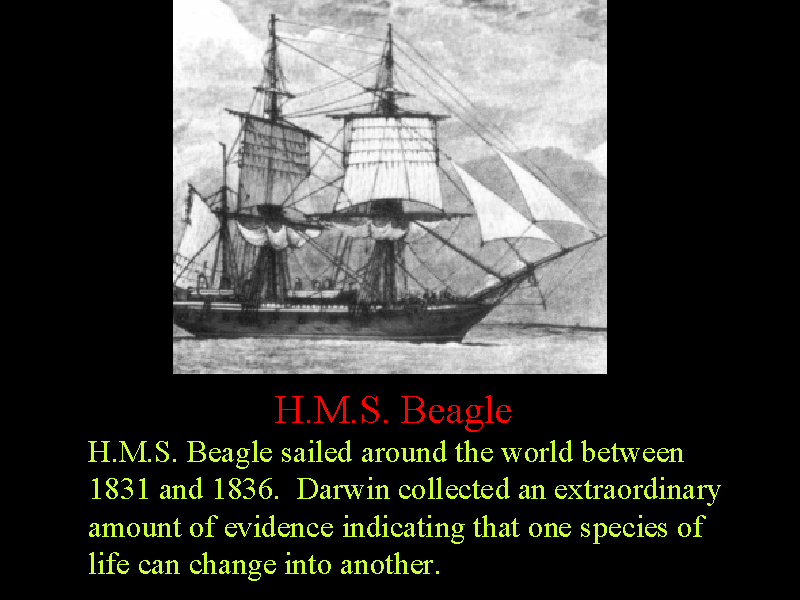 he had collected an extraordinary amount of evidence indicating that one
species of life can, given a sufficient amount of time, change into another.
Darwin argued that this is the result of biological variation acted on by
natural selection. In 1859 Charles's Darwin Published his book The Origin
of Species in which he summarized this evidence
and presented his theory of evolution.
{\bf [Insert Darwin Quote]}
Quoting from this influential work:
he had collected an extraordinary amount of evidence indicating that one
species of life can, given a sufficient amount of time, change into another.
Darwin argued that this is the result of biological variation acted on by
natural selection. In 1859 Charles's Darwin Published his book The Origin
of Species in which he summarized this evidence
and presented his theory of evolution.
{\bf [Insert Darwin Quote]}
Quoting from this influential work:
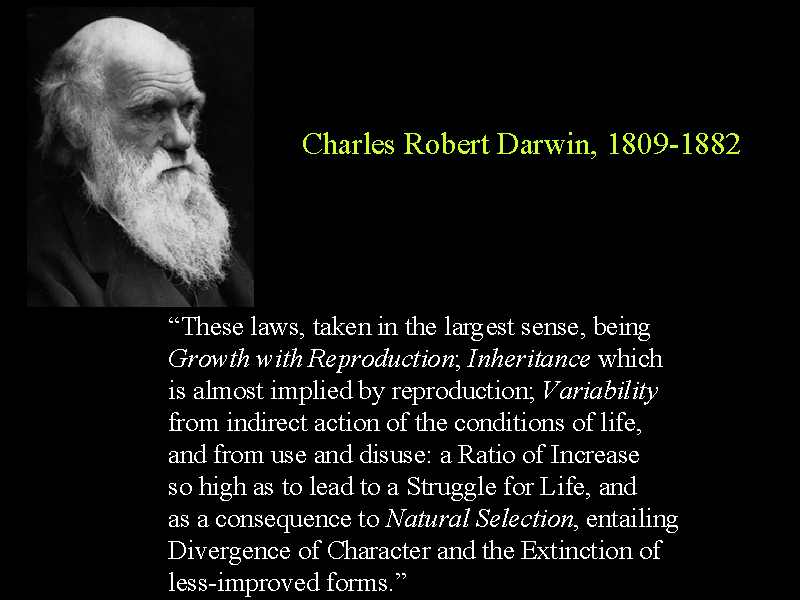 Today, Darwin's theory of evolution, backed by another 150 years of scientific
evidence, lies at the very heart of modern biology.
Today, Darwin's theory of evolution, backed by another 150 years of scientific
evidence, lies at the very heart of modern biology.
Evidence of the existence of dinosaurs dates back as far as recorded history.
Dinosaur teeth were known 3500 years ago in China.
 At the time,
the teeth were thought to be the teeth of dragons! In the 1600's and 1700's
several dinosaur fossils and footprints were found in Europe and North America.
At the time,
the teeth were thought to be the teeth of dragons! In the 1600's and 1700's
several dinosaur fossils and footprints were found in Europe and North America.
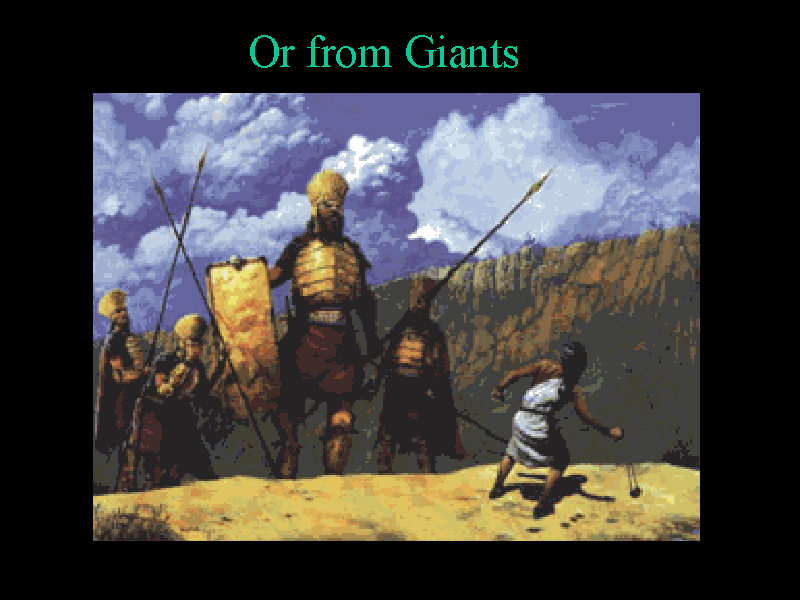 These fossils were often misidentified as the remains of very large birds or of
Biblical giants. The 1800's saw the area of natural history mature into an
organized science.
These fossils were often misidentified as the remains of very large birds or of
Biblical giants. The 1800's saw the area of natural history mature into an
organized science.
 The French scientist Baron Georges Cuvier
used comparative
anatomy to study fossils and predict how the fossilized animals lived by
comparing them to the remains of living animals.
The French scientist Baron Georges Cuvier
used comparative
anatomy to study fossils and predict how the fossilized animals lived by
comparing them to the remains of living animals.
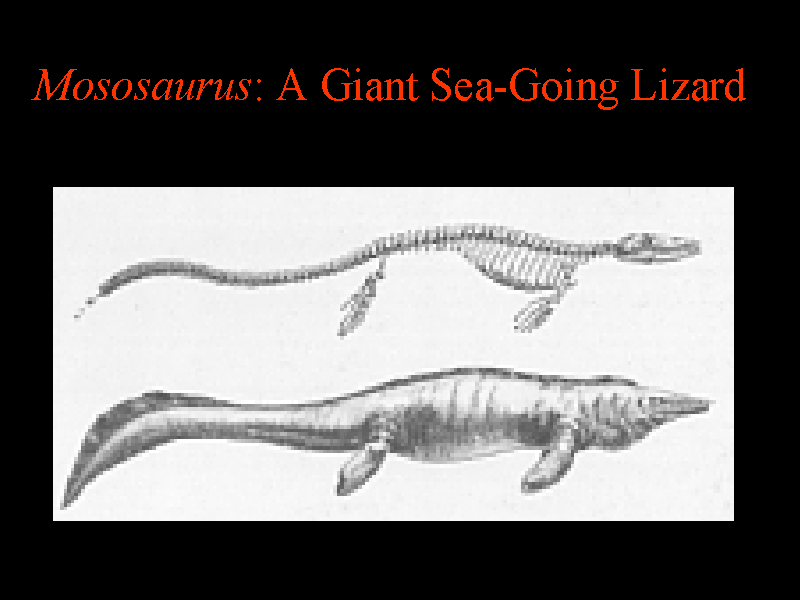 Cuvier was the first to describe the Mososaurus as a giant extinct
sea-going lizard related to the large monitor lizards of the tropics
(though Mososaurus is not a dinosaur). It was Cuvier,
in fact, who first demonstrated that species do go extinct!
Cuvier was the first to describe the Mososaurus as a giant extinct
sea-going lizard related to the large monitor lizards of the tropics
(though Mososaurus is not a dinosaur). It was Cuvier,
in fact, who first demonstrated that species do go extinct!
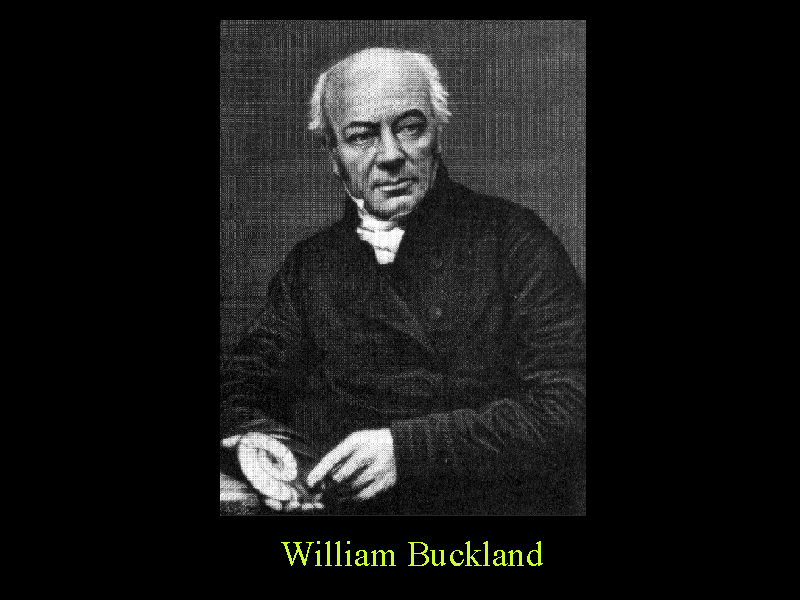 William Buckland
was the first professor of geology at Oxford University in England. In the
early 1800's, he gave the first description of a dinosaur. Based on the
fossil remains of the lower jaw, teeth, some vertebrae, shoulder bones, part
of the hip, and several bones of the hind leg, he suggested that
Megalosaurus was a giant extinct predatory lizard.
William Buckland
was the first professor of geology at Oxford University in England. In the
early 1800's, he gave the first description of a dinosaur. Based on the
fossil remains of the lower jaw, teeth, some vertebrae, shoulder bones, part
of the hip, and several bones of the hind leg, he suggested that
Megalosaurus was a giant extinct predatory lizard.
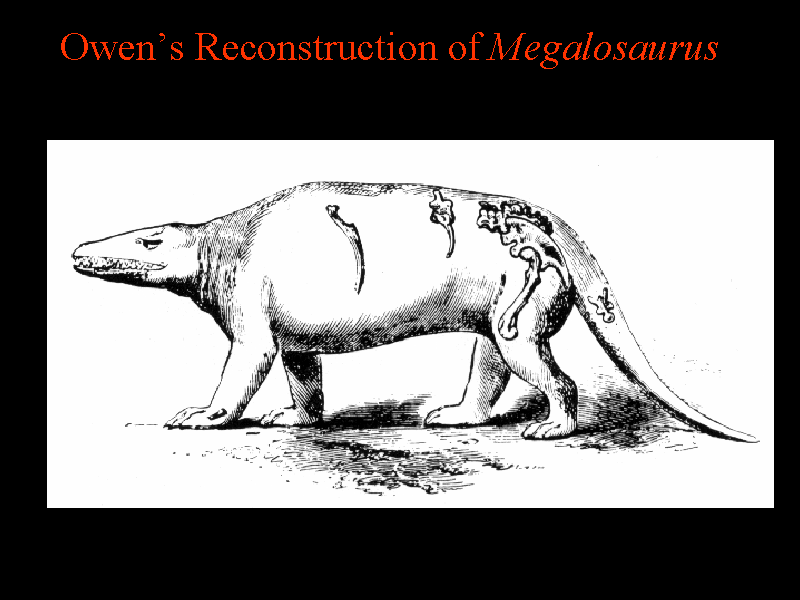 He estimated the creature at more than 40 feet long and 7 feet high.
He estimated the creature at more than 40 feet long and 7 feet high.
 Gideon Mantell
was a doctor in southern England with an interest in geology. He found several
fossilized bones of a creature he named Iguanodon.
Gideon Mantell
was a doctor in southern England with an interest in geology. He found several
fossilized bones of a creature he named Iguanodon.
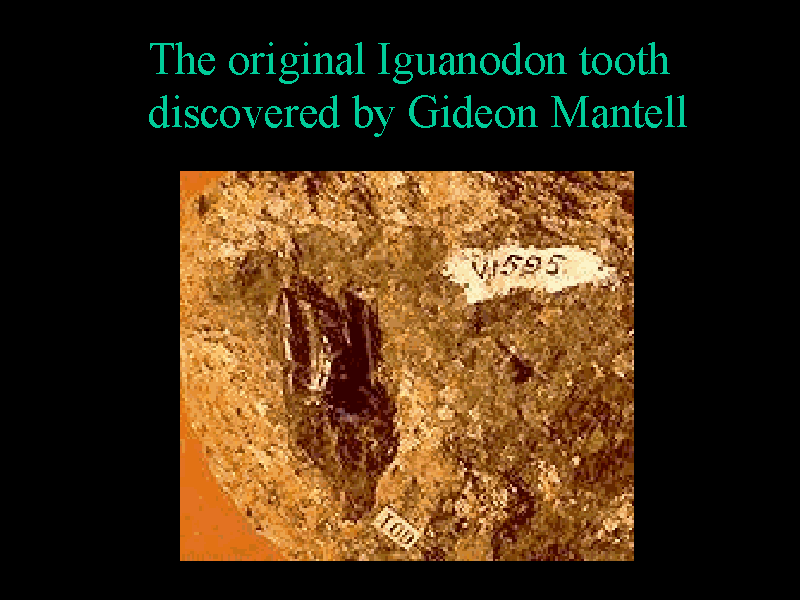 Mantell estimated that the animal was 60 feet long. His picture was, by
today's standards, crude...
Mantell estimated that the animal was 60 feet long. His picture was, by
today's standards, crude...
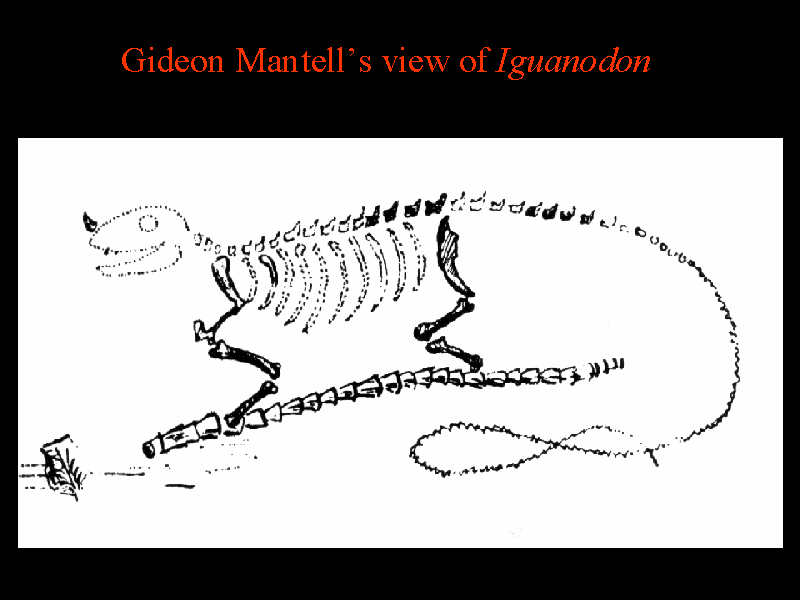
 In 1838, Richard Owen
made a comprehensive list and description of all of the fossil reptiles of
England. It is Owen who coined the term "dinosaur"
("dino" meaning terrible and "saurus" meaning lizard).
In 1838, Richard Owen
made a comprehensive list and description of all of the fossil reptiles of
England. It is Owen who coined the term "dinosaur"
("dino" meaning terrible and "saurus" meaning lizard).

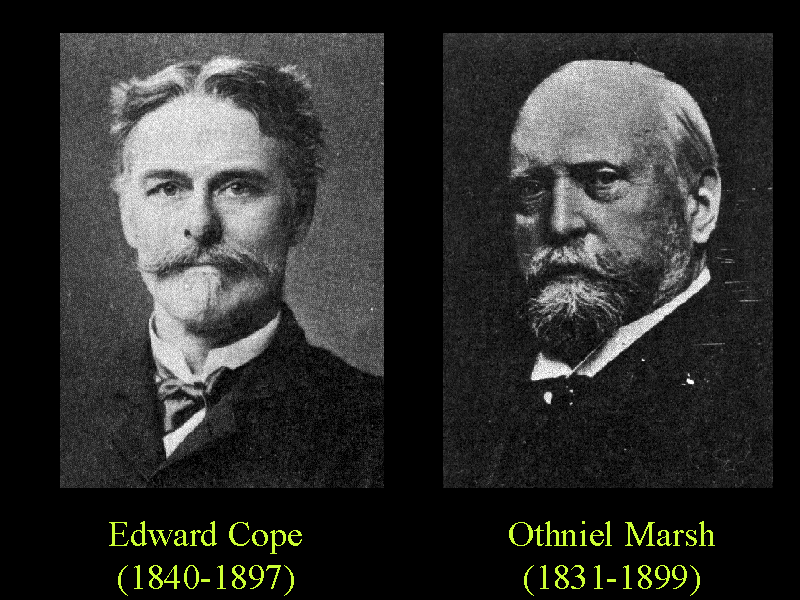 In the 1870's, there was an explosion in the number of known dinosaur species,
primarily due to the work of two bitter rivals:
Edward Drinkard Cope (1840-1897) and Othniel Charles Marsh (1831--1899).
In the 1870's, there was an explosion in the number of known dinosaur species,
primarily due to the work of two bitter rivals:
Edward Drinkard Cope (1840-1897) and Othniel Charles Marsh (1831--1899).
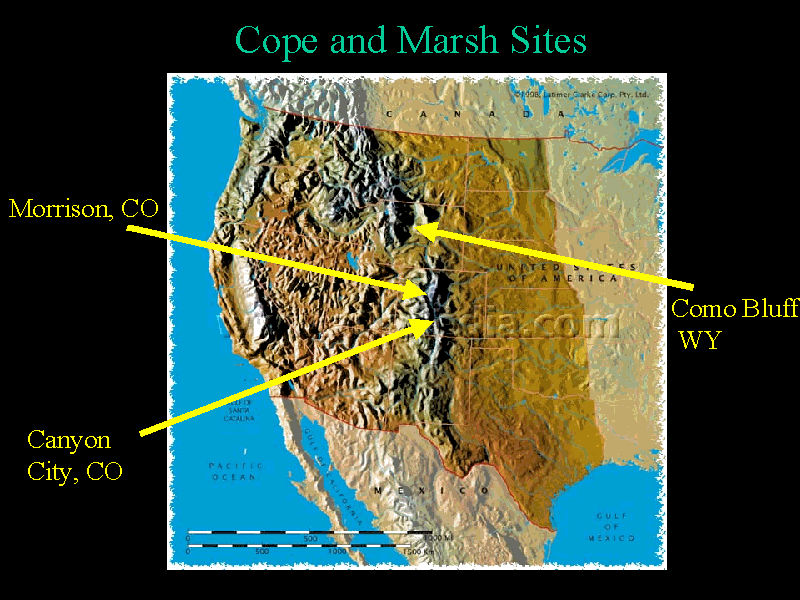 A number of excellent fossil beds were discovered near Morrison, Colorado,
Canyon City, Colorado, and Como Bluff, Wyoming. Marsh and Cope sent teams to
these areas to excavate for fossils. Unfortunately, the competition between
the two to discover the most species of dinosaurs, lead to fossils being
hastily dug up and sometimes destroyed.
This
poor example of cooperation and the scientific method did, however, lead to
the discovery of many of the most famous dinosaur species known today including:
Allosaurus, Ceratosaurus, Apatosaurus (then called
Brontosaurus), Diplodocus, Stegosaurus, and
Triceratops.
A number of excellent fossil beds were discovered near Morrison, Colorado,
Canyon City, Colorado, and Como Bluff, Wyoming. Marsh and Cope sent teams to
these areas to excavate for fossils. Unfortunately, the competition between
the two to discover the most species of dinosaurs, lead to fossils being
hastily dug up and sometimes destroyed.
This
poor example of cooperation and the scientific method did, however, lead to
the discovery of many of the most famous dinosaur species known today including:
Allosaurus, Ceratosaurus, Apatosaurus (then called
Brontosaurus), Diplodocus, Stegosaurus, and
Triceratops.
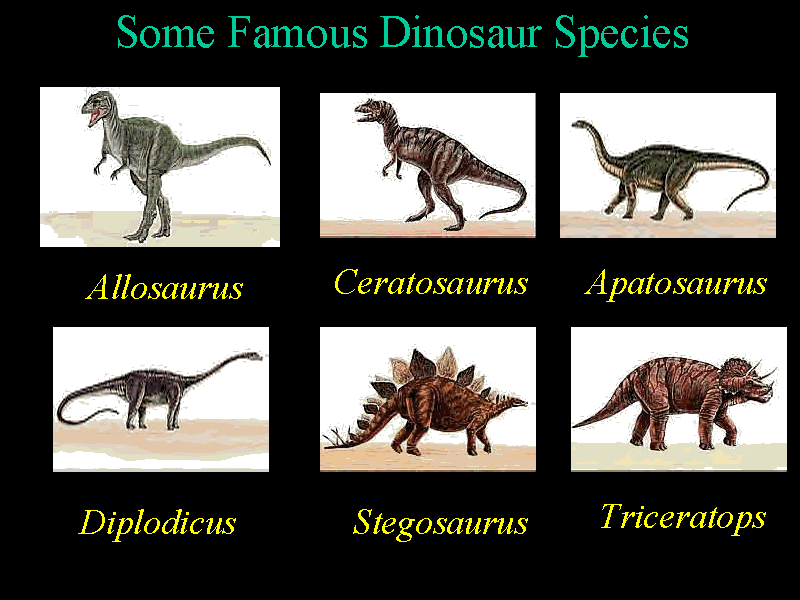
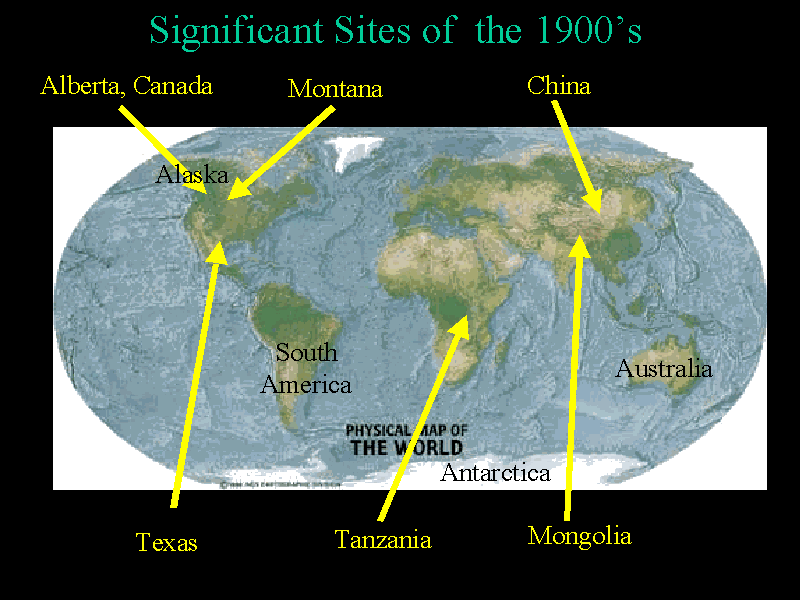 Other significant finds of the early 1900's include:
Other significant finds of the early 1900's include:
- The fossil beds of Alberta, Canada where a number of new dinosaur
species including Albertosaurus were found.
- Tanzania where German expeditions discovered Kentasaurus and
Brachiosaurus.
- Mongolia where Henry Fairfield Osborn discovered
Protoceratops, Velociraptor and Oviraptor...
Osborn also discovered the first fossilized dinosaur eggs!
- China where French and Swedish expeditions, along with Osborn's
expedition made a number of discoveries.
- Texas where Roland T. Bird discovered several fossilized dinosaur
footprints dating from the early Cretaceous.
- Montana where Barnum Brown discovered the first fossils of a large
predatory dinosaur that was described by Osborn and named Tyrannosaurus
rex.
Later in the 20th century, dinosaurs have been discovered all over the world.
Fossils have been found in South America (in particular,
Carnotaurus and Saltosaurus have been found in Argentina),
Australia, and surprisingly in Alaska and Antarctica! It seems that we are
correct in calling the Mesozoic the "age of reptiles" since dinosaurs seemed
to have been at every location of the Mesozoic world.
Go to the next section.



















